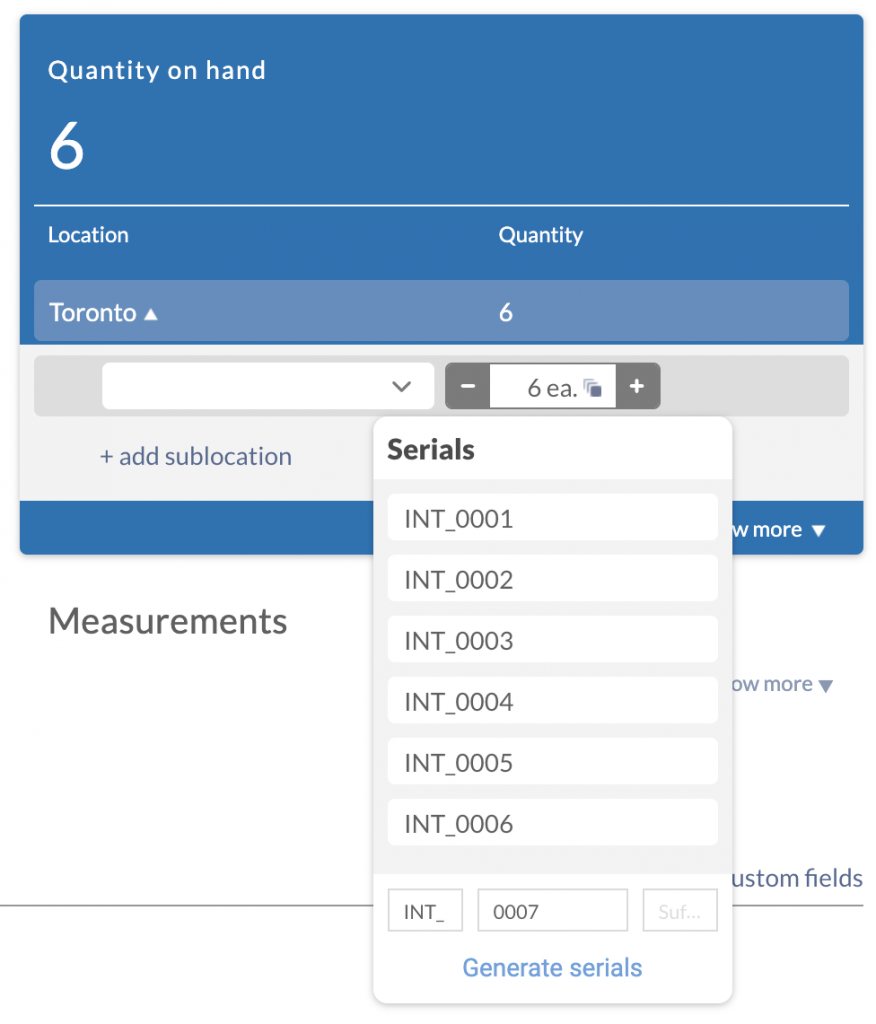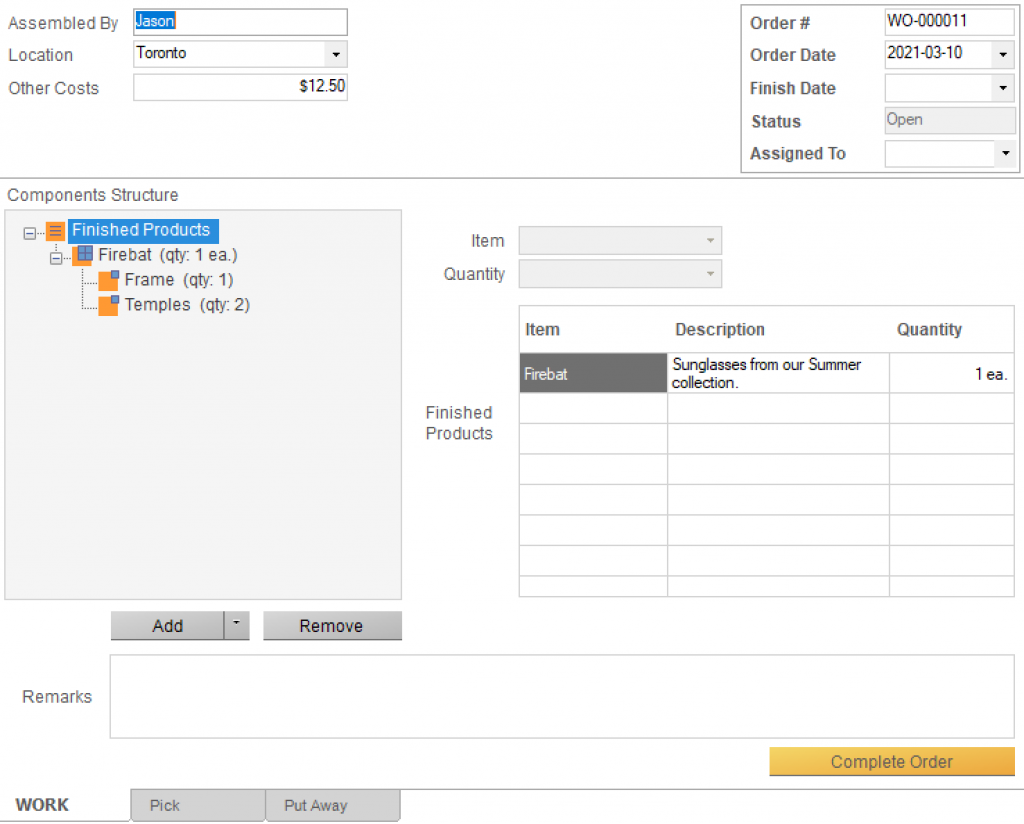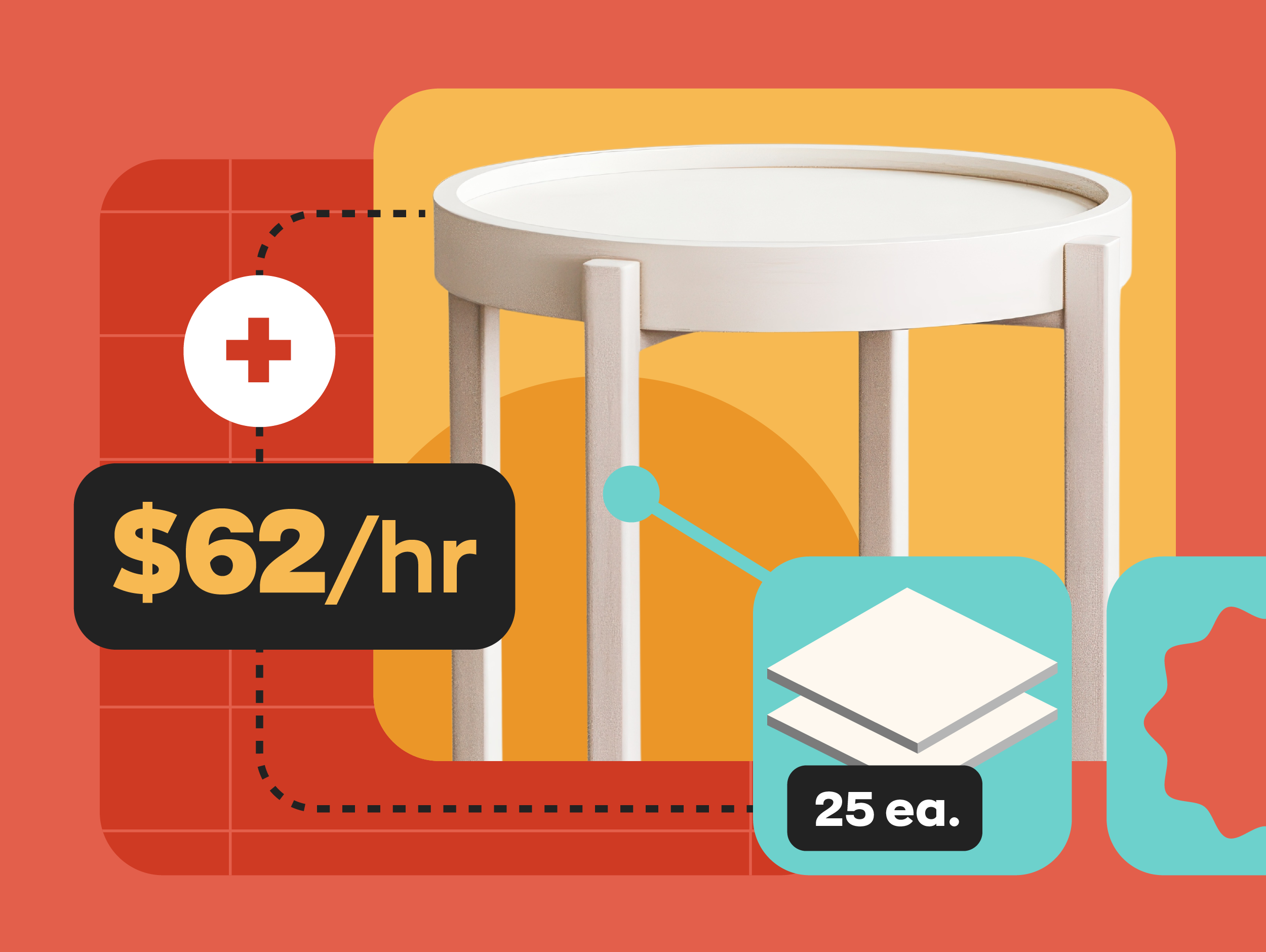If you’re a QuickBooks Online user, you’ve probably found its inventory management features lacking. That’s okay because QuickBooks Online is an accounting app first and foremost, and inventory tracking is really one of its sub-features in the higher-end Plus plan.
The QuickBooks Plus plan can help you with simple product-tracking setups, like buying goods and services on purchase orders and then selling them on sales orders. It will also show you low stock items so you can reorder them, and track your costs with the FIFO costing method.
But if you’ve already tried managing products with QuickBooks, you’ve noticed that it’s missing a lot of little features to make inventory management easier. For example, QuickBooks isn’t designed to scan barcodes, track picking and shipping, or handle serial numbers. The good news is that inFlow Inventory is designed to do all of those things, and inFlow can push sales and purchases to QuickBooks Online.
After you’ve set up our QuickBooks integration, you’ll use inFlow Inventory to manage your inventory and orders, and any invoices or purchase orders you create will automatically push to QuickBooks Online.
For example, if you record a sales payment in inFlow Inventory, this will be reflected in QuickBooks as well. This means that QuickBooks users still have a definitive financial record at the end of the month.
How can inFlow Inventory help me track my QuickBooks inventory?
inFlow Inventory was built for tracking inventory, so it handles the basics like buying products and adjusting stock levels, just like QuickBooks can. But inFlow Inventory also takes things further.
One example is how orders are handled: QuickBooks can add products to a sales order, which immediately takes them out of stock. But this doesn’t help you when orders are back-ordered or shipped out in batches.
inFlow Inventory tracks all of the inventory moving in and out of your business, so you can see which products have been reserved on a sales order, and how many you’re expecting on an incoming purchase order. It also tracks stock across multiple locations, so inFlow can tell you exactly where a product was shipped from, and how many of them are left in stock at any given warehouse.
These extra details also help you to work faster by filtering your order list. You can see, at a glance, which orders are unfulfilled, or which ones have been started and require additional work. You can also assign team members to specific orders to delegate work efficiently.
If your business is slowing down just trying to manage incoming orders, you’ll quickly see why this kind of order management is essential for your QuickBooks inventory.
QuickBooks Online doesn’t handle serial numbers
You’ll also want to use inFlow Inventory if you handle products with serial numbers, which is a feature that isn’t supported in QuickBooks Online. inFlow’s Standard and Plus plans help you track the complete movement history of each serial and also generate unique serial numbers on an ongoing basis.

This is super handy if you have any warranty claims or are trying to find out where a broken part was purchased from.
QuickBooks Online can’t assemble products or bill of materials
Then there’s manufacturing and bundling. QuickBooks Online can group items to be sold as a bundle, but if your business creates new products from components, then you’ll want to use inFlow’s work orders.

Work orders take a bill of materials (a recipe for creating something), deduct the components from inventory, and build their cost into the final products you create.
Work orders can also handle sub-assemblies, which means that you can assemble the components from multiple bill of materials on a single work order. This is a great way to keep accurate count of your components, while still ensuring accurate valuation of your finished goods.
Why QuickBooks Online works well with inFlow Inventory
inFlow Inventory has things covered from the inventory management side, and you can receive payments online through inFlow Pay (in US & Canada), but inFlow isn’t a full replacement for accounting apps.
QuickBooks Online offers features like profit and loss statements (a.k.a., P&L), which shows you how much money your business gained and lost over a period of time.
You’ll also want QuickBooks to track things like payroll and lease payments, which are subtracted from the money your business earns each month. When you review your P&L you’ll have a complete picture of the money going in and out of your business, and which areas of your business you can target for improvement.
Your best bet is to use the right tool for the right job. Use inFlow for your inventory and order management and push all of the financial data to QuickBooks Online. Your inventory will stay under control, and your accountants will have a full picture of your business’ financials.
Ready to get your QuickBooks inventory under control?






i hate quick book
Sorry to hear that Najath; if you had your choice, what other accounting app would you want to use with inFlow Cloud?
– Thomas
I have a Datamax – O’neil, E class – Mark III barcode printer, will this printer be compatable with Inflow and can you direct me to video or instruction for install / use?
Thx
Jon
Having difficulty with the fact that CUSTOMER NAME does not print out on invoices in QuickBooks, even though it is in my InFlow Customer List, and CUSTOMER ADDRESS does not printout on statements in QuickBooks, even though it is in my CUSTOMER LIST. There seems to be a hiccup with the integration as far as how the fields are mapped. Hoping there will be some resolution. Also 2-way payment integration is needed, if you deal with pre-payments.
Hi Mary,
I’m sorry to hear about the difficulty you’re having with the QuickBooks Online integration right now. I’ve cross-checked the email address you left in this comment with our support team, and it looks like they do have a support ticket with you from today. I’ve provided them with the extra details from your comment here so you won’t need to re-explain anything.
Thank you for bringing this to our attention and providing the detailed feedback. Someone from our team will be in touch with you soon!
Is QuickBooks Desktop also compatible with InFlow Cloud? For many reasons, I don’t want to move to QuickBooks Online, but having to make entries (sales, purchase orders, etc) is getting old.
Thanks!
Hi Lynne, sorry for the late reply here.
Unfortunately we will not be supporting QuickBooks Desktop. I understand that QuickBooks Online doesn’t have the same capabilities as QuickBooks Desktop. However when our developers looked at how inFlow and QuickBooks could communicate, QuickBooks Online was the best choice for creating a reliable and sustainable integration.
Can InfFlow be integrated to existing QuickBooks Online or do we need to set up a whole new QuickBooks for it to work?
Hi Karla, inFlow Cloud can connect to an existing QuickBooks Online account — it doesn’t have to be a new account. Our integration works by pushing data to QuickBooks Online, and we’ve got more details on that in this support article: https://www.inflowinventory.com/support/cloud/setup-quickbooks-online-inflow-cloud/
Hope that helps!
will Inflow integrate with QuickBooks Pro. we don’t use QuickBooks Online.
I provide accounting through QuickBooks Online for one of my clients, who uses inflow. We set up the intergration between both systems. Unfortunately the sales orders coming into QuickBooks Online from InFlow all have zero $ values. Can anyone help.
Hi there! I’m sorry we missed your comment here on the blog, but I did check on the email address you left us and it looks like you’ve spoken with our support team and they’ve also sent you a transcript of the chat for your records. If there are any more QuickBooks Online questions, the best place to get a hold of us is via the Contact button at the top of our website.
Hi
We currently use QuickBooks Online UK version and for most things we are happy, however inventory and sales onders are we’re we feel lacks what we need. We also install and retail produces and require a sales order to be able set prices inclusive of tax like QuickBooks, is this feature available in inflow.
Hi Jim, yes, VAT-inclusive pricing is definitely something we support. We actually launched a UK-specific page to answer some of these types of questions.
https://www.inflowinventory.com/use-cases/united-kingdom
We manufacture architectural stone veneer. When we track our stone costs- or sell the stone- it’s done on a “per square foot” basis. However, we package the stone on individual pallets for sale…one pallet might have 100 SF…another might have 150 square feet…and so on. Do we need to assign a new number to every pallet?
Hi John, thanks for getting in touch.
Yes, I do think it would be a good idea to assign different item names or SKUs to those other pallet types.
In inFlow you could use a work order to combine 100 square feet of stone into a 100 SF pallet.
This would automatically deduct 100 units of stone from an inventory location and create a new item, a 100 SF pallet. This could help to better reflect the reality of that inventory—that you already have 100 SF prepped and ready for an order.
Nice Blog. Thanks for posting it.
I am looking to find a way to just journal/enter the cost of goods that cost to each job. Some are ordered from manufacturer. we also have stock inventory that needs to get costed to a job. Is there a way to get a total dollar value added to the Stock Transfer printed page?
Hi Kathy,
Our stock transfer page doesn’t add any extra cost values right now. But they will affect the reported inventory cost value at each location. So if you transferred $500 of product from Location A to Location B, you’ll now have $500 more in cost value at Location B and -$500 at Location A when the transfer is complete.
The recommended method right now for adding/modifying costs is through purchase orders and work orders. We’ve got a good breakdown of how inFlow handles cost calculations in this article: https://www.inflowinventory.com/support/cloud/inflow-cloud-calculate-cost-item-cost-goods-sold/
If POs and work orders don’t work for your needs, could you let us know a bit more about why you’d like them in stock transfers?
Awesome Blog! Track inventory in QuickBooks.
I provide accounting through QuickBooks Online for one of my clients, who uses inflow. We set up the intergration between both systems. In daily basis transactions, it is essential to keep a record of inventory. The art of handling the inventory is necessary for any type of business, satisfying customers.